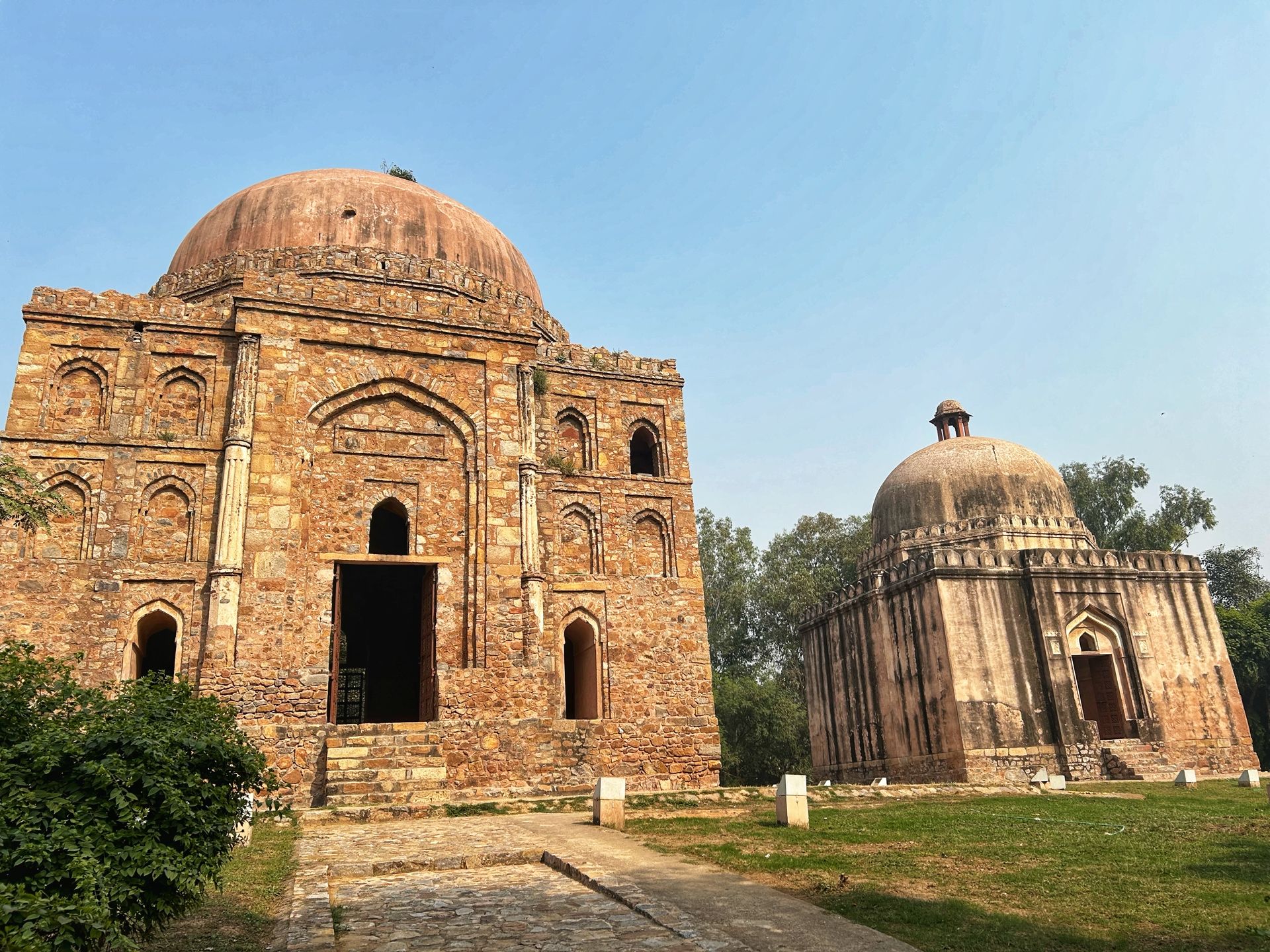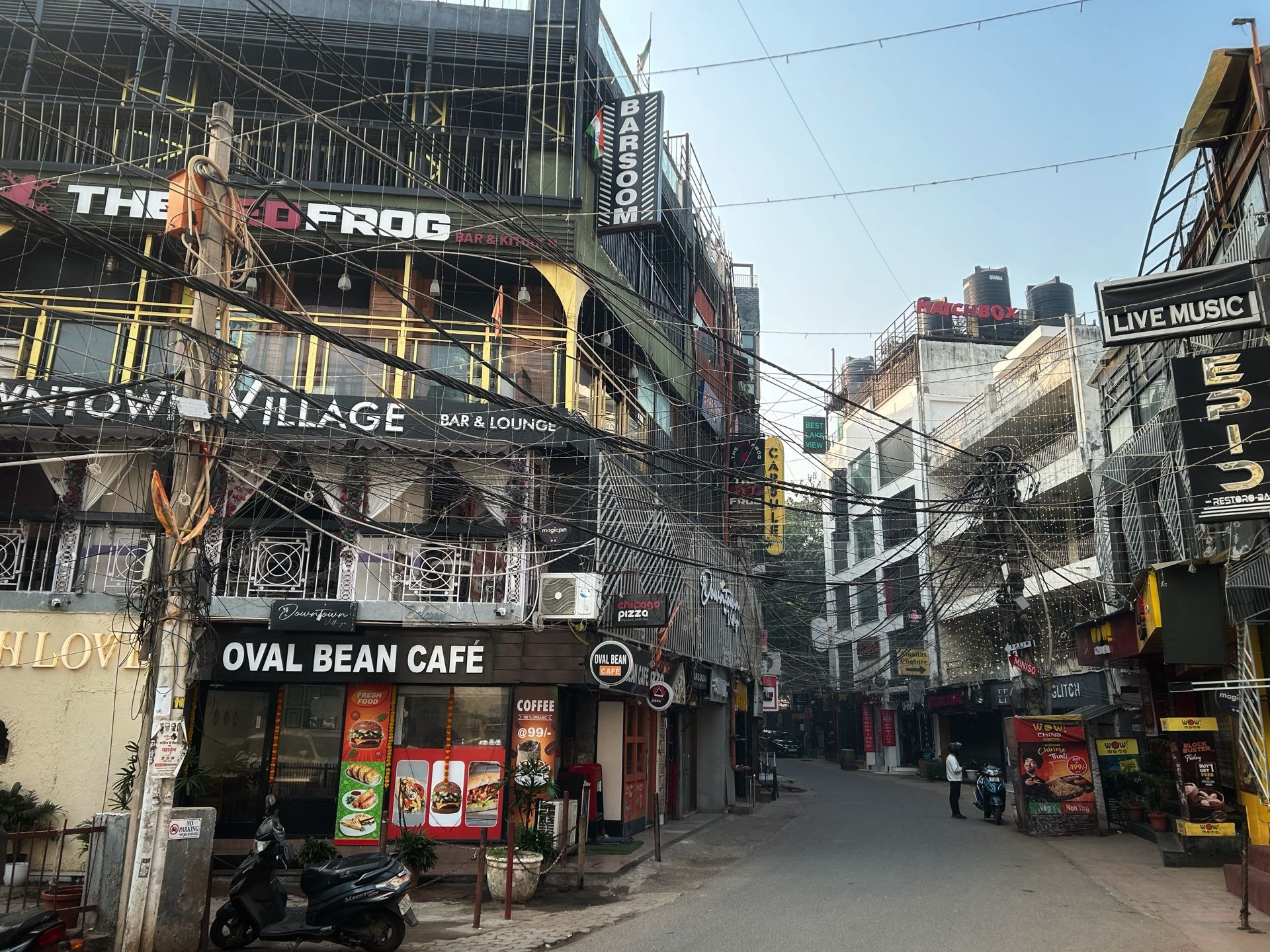

Hauz Khas
Hidden Historical Gems
Beyond Feroz Shah's Madrasa and the Deer Park Lake, Hauz Khas is home to several medieval structures. Little is known about their origins or purpose, which makes them easier to overlook but also deepens the mystery surrounding this area.
Inside the Deer Park
Three of these gems can be witnessed inside the Deer Park. These lie on the side farther from HKV - about 15 mins walk from the lake and past the DDA office.

Kali Gumti
This square tomb with a mihrab on the west was probably built in the Lodi period. Adjacent to this is a walled mosque. The name Kali Gumti is a descriptive one for its blackened dome.
Bagh e Alam Ka Gumbad
Architecturally, the structure is an example of the Lodi period, featuring multiple arched niches on the exterior arranged to resemble separate storeys. The interior is a single large chamber.
Bagh-e-Alam ka Gumbad translates to "the domed structure in Alam's garden". This name holds dual meaning—"Alam" can signify "the world" or refer to an individual. This tomb dates back to 1501. A Persian inscription on its western wall hints that it was commissioned by a person named Abu Syed to honor Miyan Shaikh Shihabuddin Taj Khan. Little is known about either of them.
Tohfewala Gumbad
The Tohfewala Gumbad lies to the north-east of Bagh-e-Alam Gumbad, This structure, likely dating back to the Tughlaq era, is far simpler in design than its counterpart but houses several sizable cenotaphs within. Its atmosphere is perhaps the most unsettling of them all.
Near the Aurobindo Market
Five mini wonders stand just a few meters from Sri Aurobindo Marg and Summer House.

Sakri Gumti
A "narrow" domed building referring to its low area and size. It has a battlement design ("kangura") on the parapet and the ceiling of the dome has a painted medallion. This most probably comes from the Lodi period but it is unclear who is buried here.
Choti Gumti
With a very narrow shape, this one is more likely to be a gateway than a tomb. This too has a kangura design with remnants of a wall still attached.
Barah Khamba
Literally "Twelve Pillars", a square tomb from the Tughlaq period, that houses a number of cenotaphs. There are other interesting constructions here like a lamp niche and a bastion.
Dadi-Poti Tomb
Again carrying a descriptive name, the "grandmother-granddaughter" tombs are a pair of structures with distinct architectural features. The smaller Poti Tomb, attributed to the Tughlaq period, is characterized by its sloped walls and a lantern-like structure perched on its dome. In contrast, the larger Dadi Tomb, built during the Lodi era, reflects the more ornate and evolved architectural style of its time.
The difference in design and construction between the two offers a glimpse into the transition of architectural trends across these periods. The Tughlaqs were more practical and utilitarian while the Lodis focused more on ornamentation.
More in the Hauz Khas series



